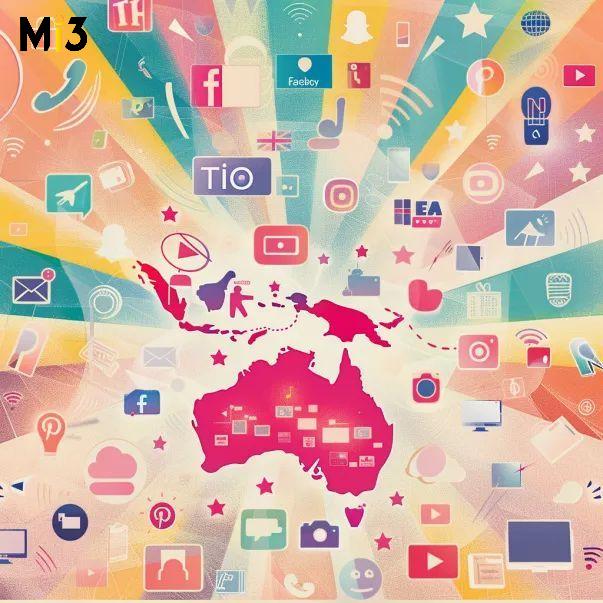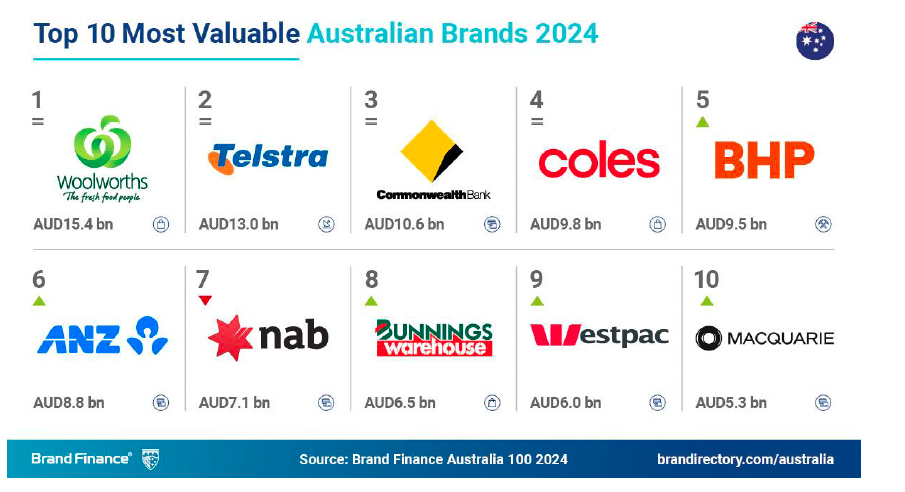Australia Post’s AI approach shifts drudgery to discipline in creative production work, reinvests 30% efficiency dividend in agency relationship – but shifts incoming

What you need to know
-
AI is quietly transforming marketing operations, not replacing creativity at Australia Post who worked with BRX to show how AI boosts efficiency by automating repetitive tasks, codifying brand rules, and accelerating asset testing.
-
Australia Post has standardised bottom-funnel creative production via brand templates and algorithmic testing, removing manual checks and speeding campaign delivery.
-
BRX has delivered Australia Post a 30 per cent efficiency gain by automating “commodity tasks” and shifting focus to high-impact creative work. Rather than cut fees, Australia Post now does more for the same spend.
-
Governance is keeping pace: Australia Post has formed an internal AI council; BRX logs prompts and ensures auditability. Both enforce guardrails to mitigate IP and ethical risks.
-
Synthetic humans in ads are banned: Both firms draw clear ethical lines, no AI-generated people in campaigns, no mimicking artists or brands.
-
AI is enhancing, not replacing, creative thinking: It broadens options, reduces churn, and sharpens learning cycles. Staff spend more time judging, less time producing.
-
The endgame is a ‘brand operating system’: A framework where brand tone, consistency, and efficiency are embedded in workflows—freeing teams to focus on judgment and strategy.
The first round of creatives came out. Wow. Okay, it’s good. It looks clean. It’s given us variations that we wouldn’t do in a normal campaign
Marketing likes a little drama. Depending on which conference you attend, artificial intelligence will either end creative work as we know it or usher in a golden age of ingenuity. Reality, as usual, is prosaic, both duller and more interesting, depending on your priorities. AI is, for now, a system for stripping out repetitive tasks, codifying brand rules, and accelerating the testing of ideas. The result is less upheaval than adjustment: craft survives, but in altered form.
That is the lesson from two practitioners at the coalface. Aimee Dixon of Australia Post and Bridget Cleary of creative production agency BRX describe a shift that is pragmatic rather than visionary. AI is being embedded first in production, then in governance, and slowly in brand strategy. The change is cultural, commercial and, above all, operational. The payoff is measurable efficiency. The risk is loss of control if governance lags behind automation.
Automation before imagination
Australia Post’s problem was a familiar one for marketers: too many campaign assets, too little time. The solution was to encode brand decisions into templates and let algorithms produce bottom-of-funnel variants. As Dixon put it: “It’s really about creating a platform where all that conversion-type marketing can be seamless. And not just seamless—we’ve also spent the last six months working with BRX to build out the brand guidelines, shaping how we think things should show up.”
According to Dixon, “It’s now the standard for all campaigns, so my marketers don’t have to manually check bottom-of-funnel assets, it’s automated. Since we’ve approved the brand guidelines, we can generate a wide range of activity across campaigns, and then let the algorithm determine which ones are more likely to convert.”
Importantly, it didn’t take too long for Dixon and her team to recognise they were onto a winner, at least in terms of asset creation. The payoff was basically immediate, she told Mi3.
“The first round of creators came out. Wow. Okay, it’s good. It looks clean. It’s given us variations that we wouldn’t do in a normal campaign,” she said.
BRX applied similar logic. Cleary mapped an annual torrent of assets, pulled legal and partners into the process, and automated what she calls the “commodity tasks they used to do.”
“What we wanted to focus on was automating the Australia Post brand into essentially a brand operating system. So it’s not really about AI. It’s more about how you look at the process behind all the assets created over a year, and the need to make them better, then smarter, so that the smart people on their end are freed up to do higher-quality work instead of acting as the brand police.”
According to Cleary, “They don’t have elongated approval processes where people like legal or partners make changes, because you’ve brought them into the process and custom-built an operating system that works for them.”
“We hear a lot about AI, but not enough about automation.”
There’s also an important element of future proofing to the work, said Cleary. “It also means you’ve got a framework that’s very high craft and quality, by which you can then start to integrate AI more, because you’ve got that great ecosystem that creates all the 1000s and 1000s of assets that you do every year.”
Procurement was pleased too, since Australia Post is getting much more bang for its buck.
Per Cleary, “Australia Post haven’t reduced our fee, but we’ve got what we call a 30 per cent efficiency dividend… 30 per cent more this year for the same price because of all of these things that we’ve integrated or created for them.”
The lesson for executives is obvious: start with the grind. Automate the permutations where rules are clear and waste is visible. Free up talent for work that affects strategy and brand. Then measure the savings.
Guardrails, not guesswork
Efficiency is only tolerable if governance keeps pace. Both organisations have installed oversight systems. Australia Post has an internal AI council. Legal and compliance teams fret about intellectual property leaking into the wrong hands. “We absolutely need to feel comfortable that that kind of IP doesn’t get into the wrong hands,” Dixon warned.
Supervision is shifting from checkpoint to supervision by exception. Asked whether she preferred “human in the loop” or “human on the loop,” Dixon was clear: “It would be the second one… within the parameters that we set. We don’t need someone pressing the button anymore.” Reviews happen at the end of campaigns, when people refine inputs and lock in learnings.
BRX follows a similar pattern. Auditability is designed in. “We keep a record of all of the prompts. We keep a record of the provenance of an image,” Cleary explained. The firm will “never prompt in the style of an artist or brand,” and it runs reverse-image checks to avoid accidental lifts. The principle is simple: act as if regulation will harden, and document everything now.
Neither Dixon nor Cleary sees AI as a substitute for imagination. Machines multiply options; they do not originate ideas. “None of this should come at the cost of performance,” said Cleary. “It should improve performance. It should also elevate brand craft. We probably have a bit of an organisational bias.”
“There’s a strong opinion that extreme creativity drives the greatest performance, ” she said.
But sometimes groupthink is wrong, and she alluded to the success of Big Red Agency’s Down Down for Coles Supermarkets, which she claimed the industry “despised.”
Many creative purists did hate the ad, but it worked.
“That was the most commercially effective advertising done in this country in about 30 years. It added $40 million from media to the bottom line in year one because of its efficacy. So I do think there are some self-serving views in the advertising industry that don’t always play out in actual results.”
Better options
In practice, AI has widened the option set and tightened learning cycles. Creatives spend less time churning and more time judging. “It frees them up,” Cleary added.
This also punctures the industry’s false binary. AI is neither the creative idea nor a mindless paint-by-numbers engine. It is a tool for expanding choice under constraint, reducing waste, and protecting brand discipline. Used well, it is less about turmoil than about quiet, clever efficiency.
Just because it’s legal to do something doesn’t mean it’s ethical for a brand to do something.
The red lines are thick. “We would never have machines make people at the moment. Certainly not our own team members,” said Dixon.
Cleary agreed, stressing context. A mascot may be acceptable; a synthetic human is not. “Just because it’s legal to do something doesn’t mean it’s ethical for a brand to do something,” she argued.
For Australia Post, ethics and security converge. As one of the country’s most impersonated brands, it cannot risk models that generate material useful to fraudsters. For BRX, the imperative is provenance. By keeping prompt records and avoiding mimicry of artists or brands, the agency is betting that ethics will one day be indistinguishable from compliance
Cleary describes the emerging model as a “brand operating system.” By embedding craft in templates, components and workflows, firms can generate thousands of assets faster and more consistently. Over time, that system becomes a platform for AI to climb the stack: from automating production, to proofreading copy, to encoding brand tone.
The process resembles a palimpsest: the faint traces of old craft remain visible beneath a new layer of automation. What survives is judgment, tone and empathy. What is overwritten is repetition. The change is gradual, not revolutionary, but it is real.
The lessons are straightforward. Begin with asset classes where rules are clear and outcomes measurable. Install governance before automation. Keep audit trails. Shift agency contracts from hours to outputs so efficiency is rewarded, not penalised. Upskill teams in context, not in theory. And keep humans in the picture, literally. Do not let synthetic people front your brand.
Beyond the noise
Much of the public debate still swings between extremes. Either AI will end creative work, or it will inspire artistic renaissance. The truth, at least for now, is more mundane and more consequential. AI is becoming an operating system for marketing: efficient, auditable, ethically bounded. The upheaval is less about jobs vanishing than about systems being redesigned.
Australia Post and BRX have already moved. They have swapped manual checks for supervised autonomy. They have embedded ethics and audit trails. They have delivered efficiency dividends without abandoning craft. That is a model worth copying.
The story will not end here. Campaigns will misfire. Laws will tighten. Tools will change. Yet the trajectory is clear: AI is climbing the brand value chain. First production. Then voice. Next strategy. For executives, the choice is whether to shape that climb or be dragged by it.
For now Australia Post is focussing on delivery. But as it gets more confident in the outcomes, expect AI to work its way up the value chain.
In other words, it’s in the post.





